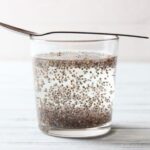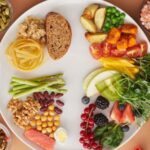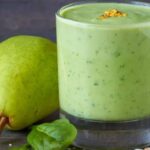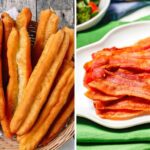Belly fat consists of two main types: subcutaneous fat and visceral fat. Aside from being aesthetically unpleasing, abdominal fat accumulation can pose serious health risks, especially when visceral fat levels are high.
Subcutaneous fat is the layer of fat located just beneath the skin, visible to the naked eye and pinchable. While not as dangerous as visceral fat, excess subcutaneous fat can still negatively impact one’s health. When this type of fat accumulates, it leads to weight gain, putting pressure on joints and the spine, resulting in pain and reduced mobility. Additionally, scientific research suggests that excess subcutaneous fat can impair insulin sensitivity, increasing the risk of type 2 diabetes.
On the other hand, visceral fat, which surrounds internal organs such as the liver, heart, stomach, and intestines, is considered far more dangerous. The increase in visceral fat not only compresses these organs but also releases inflammatory substances, disrupting the body’s metabolic processes. This can lead to severe health issues, including cardiovascular diseases, high blood pressure, stroke risk, fatty liver disease, and diabetes. Particularly, individuals with larger waist circumferences often face a higher risk of metabolic syndrome, a promoter of various chronic illnesses.
Therefore, controlling belly fat is not just about improving one’s physique; it also plays a crucial role in long-term health preservation. Reducing abdominal fat helps maintain a stable cardiovascular system and prevents the onset of diabetes and other chronic health issues. Additionally, as belly fat decreases, the body becomes more flexible, the mind becomes more relaxed, and overall quality of life improves.

Controlling belly fat is crucial not only for improving physical appearance but also for maintaining long-term health.
In addition to maintaining a regular exercise routine, incorporating belly fat-reducing foods into your diet is essential. Several protein-rich foods have been proven to effectively reduce belly fat by increasing satiety, curbing appetite, and boosting metabolism. These foods include:
Salmon
Salmon is renowned for its high-quality protein content, which plays a vital role in reducing visceral fat. This fish is rich in omega-3 fatty acids, which reduce inflammation and improve insulin sensitivity. When the body effectively regulates insulin, abdominal fat accumulation decreases significantly. Omega-3 also enhances metabolism, aiding the body in burning calories even at rest.
Additionally, the protein in salmon helps maintain muscle mass, an important factor for those aiming to reduce fat while retaining a toned and firm physique. Salmon also provides vitamin D, which is closely linked to belly fat reduction and cardiovascular health. To maximize its benefits, opt for steaming, grilling, or pan-searing salmon instead of deep-frying.
Eggs
Eggs are protein-rich yet low in calories, helping to curb hunger and prevent visceral fat accumulation. Egg yolks are particularly rich in choline, an essential nutrient that aids in fat metabolism and prevents excess fat storage. Additionally, eggs help maintain muscle mass during weight loss, enabling the body to burn more calories even at rest.
Another advantage of eggs is their ability to regulate ghrelin, the hunger-causing hormone. This helps reduce appetite and lower daily calorie intake. Studies have shown that individuals who eat eggs for breakfast tend to consume fewer calories in subsequent meals. To optimize the benefits, prepare eggs by boiling, steaming, or frying with a moderate amount of oil, and accompany them with green vegetables.

Studies indicate that individuals who eat eggs for breakfast tend to consume fewer calories throughout the day.
Beans
Beans, including lentils, green beans, red beans, and chickpeas, are considered excellent sources of plant-based protein, offering significant benefits in reducing visceral fat. Beans are rich in soluble fiber, which helps stabilize blood sugar levels and reduce abdominal fat accumulation. The fiber in beans aids digestion, reduces bloating, and promotes a healthy gut microbiome.
Bean protein helps maintain muscle mass, while the high fiber content induces a feeling of fullness, reducing overall calorie intake. Notably, beans have a low glycemic index, helping to regulate insulin levels and lower the risk of developing diabetes. Incorporate beans into soups, salads, or other dishes to maximize their nutritional value.
Chicken Breast
Chicken breast is a protein-rich and low-fat food, ideal for reducing visceral fat while maintaining lean muscle mass. Chicken protein boosts metabolism and aids the body in efficiently burning calories. Additionally, chicken breast contains minimal saturated fat, helping to prevent the accumulation of excess fat around the internal organs.
Chicken also provides essential amino acids that support muscle recovery after workouts and contribute to a toned physique. To preserve its nutritional value, opt for boiling, steaming, or pan-frying chicken with minimal oil. Avoid fried chicken or chicken skin, as they can add unwanted calories.
Greek Yogurt
Greek yogurt is a perfect choice for those aiming to reduce belly fat, especially visceral fat. This type of yogurt is rich in protein and contains beneficial probiotic bacteria, which improve digestion, reduce inflammation, and support weight management. Probiotics in yogurt also help balance the gut microbiome, reducing the risk of excess fat accumulation.
Greek yogurt stands out for its high protein content, which promotes muscle maintenance and induces a feeling of fullness, reducing daily calorie intake. Additionally, yogurt provides calcium, a mineral associated with visceral fat reduction. Feel free to pair Greek yogurt with nuts, fruits, or honey to enhance its flavor while maintaining its health benefits.
The Secret Ingredient to Enhance Ginger Water’s Weight Loss Properties Post-Tet
Introducing the ultimate solution to your post-holiday weight worries – Ginger Chia Seed Water, your powerful ally in the battle against stubborn fat. This dynamic duo of ginger and chia seeds creates a potent formula that targets internal fat, helping you achieve your fitness goals and embrace a healthier you.
“High-Fiber Foods That Help Reduce Belly Fat Fast”
For those striving to shed pounds and burn that stubborn belly fat, incorporating a healthy dose of fiber into your diet is key. Trimming down your waistline not only makes you feel more comfortable but also boosts your overall health when sporting a slimmer midsection. While most are familiar with subcutaneous fat – the pinchable fat just beneath our skin, many remain unaware of visceral fat, lurking deep within the abdomen. This type of fat surrounds vital organs and has been linked to serious health issues such as certain cancers, strokes, type 2 diabetes, and more.



































